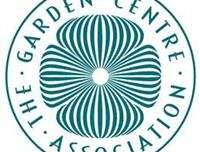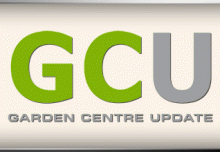 There is a serious element behind this question. Lets face it, my picture hardly shouts out “here is a man who has spent 40 years in journalism and gardening pr” does it? It will be changed for the next issue!
There is a serious element behind this question. Lets face it, my picture hardly shouts out “here is a man who has spent 40 years in journalism and gardening pr” does it? It will be changed for the next issue!
It will be changed because the reader absorbs a photograph far more instantly and develops an immediate mind-set about the subject or the individual. That’s why the paparazzi snappers hang around outside the top nightclubs frequented by young royals, footballers and other celebrities. There is a massive market from the press for pictures that catch them “close up and personal”.
But back to your garden centres. In previous articles we looked at the importance of timing in helping you achieve coverage in your local and regional media. We then identified some of the pitfalls to be avoided when writing the press release. This month it’s the turn of the photograph.
There is no doubt that a well taken and correctly captioned photograph accompanying a press release greatly enhances the chances of it being used in the press. But it isn’t as simple as just sticking in a download from your pocket camera and hoping for the best.
With the advent of the ubiquitous digital camera, most people can take a half decent photograph. But what of? And what should be included?
To get a photograph published it has to overcome the same barriers as the press release. It has to be appropriate, not a free advertisement, current and clearly explained. As usual in these columns, I include a list of Do’s and Don’ts at the end. But before we get there, let’s consider what the photograph has to achieve.
It must be part of the press release and tell, in pictorial terms, the same story. So, if the story is about a new member of staff, that is your photograph. But don’t take it with the logo of your garden centre as the main feature and the new person somehow scrambled in at one side.
Another good tip to remember is that people buy copies of newspapers if they contain pictures of themselves. So when taking a photograph always look for the opportunity to include as many people as are appropriate to the story. But include with it a full left to right caption that includes their names and, if appropriate, job titles.
Unusual or interesting plants or flowers may be the subject of the story but a more effective photograph would be a close up of a member of the sales team, or a customer, looking at it.
It doesn’t matter which newspaper you are sending your photograph to, they will only use half decent pictures. Blurred images with people’s head or feet cut off won’t make it. Ideally, if you have a big story, you can either hire a professional photographer yourself or invite the local newspaper to send their own.
But they will usually require at least a week’s notice. So, if you are planning a major event, send a Photocall Note to the news editor or chief photographer. On it explain briefly what the event is, where, what time and when it is taking place and the name and contact details of someone at your garden centre who will be there on the day and can be contacted for more details.
On the other hand, if something out of the blue happens at your nursery – for example, a celebrity drops in and agrees he or she can be photographed – give the local newspaper a ring straight away and explain. But be on the safe side and take a photograph yourself.
The following checklist will help you to get your photograph published:
- Most local and regional newspapers can accept colour photographs or, better still, high-resolution jpegs that are e-mailed to them. Always include on a separate sheet but part of the same document a clear left to right caption. Remember, even though the photograph may accompany a press release, the caption has to be a stand-alone story. The release and photograph may get separated and each needs to contain sufficient information to stand-alone.
- Photographs must be of as high a standard as you can achieve. Just take a look at your local newspaper and you will quickly see what it used and the quality of the pictures.
- Send your advanced Photocall Note as early as possible and always include on it brief details of the event, where, when and at what time it is taking place and a name and mobile telephone contact of someone at your end who will be there on the day.
Always keep a fully charged digital camera in the centre – you never know what might happen!




